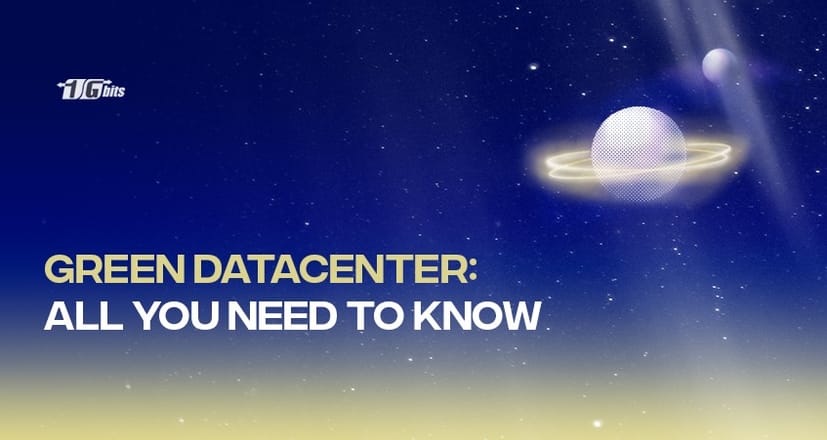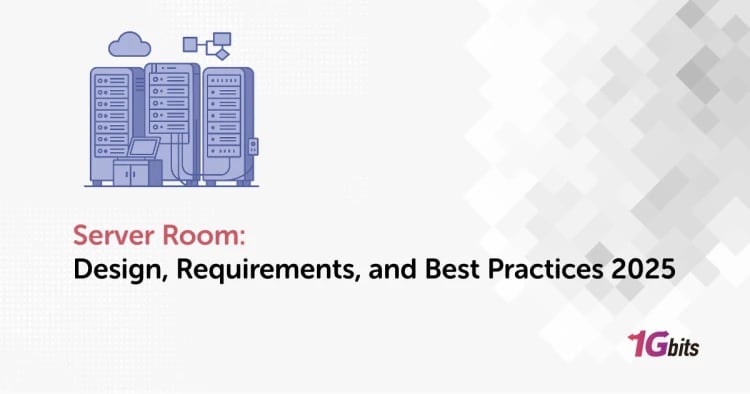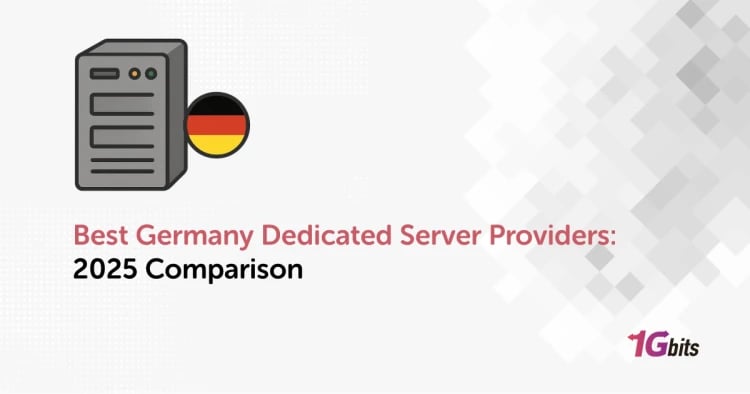As the world grows more digital, data centers are becoming increasingly essential to meet the growing demand for computation and storage. Traditional data centers, on the other hand, can be energy-intensive and contribute considerably to carbon emissions. Green Datacenters come into play here. Green data centers are meant to have as little environmental effect as possible by utilizing energy-efficient technology and sustainable methods.
We will look at what green data centers are, how they function, and why they are significant in this blog article. We will also review the advantages of green data centers, the obstacles and constraints, and upcoming developments in the green data center field. By the conclusion of this essay, you will better grasp green data centers and their role in fostering sustainable computing.
What is Green Datacenter?
Green data centers are computing facilities that use energy-efficient technology and sustainable approaches to reduce environmental effects. These data centers employ various technologies and tactics to minimize energy usage and carbon emissions, including virtualization, server consolidation, efficient cooling, and renewable energy sources.
Green data centers strive to encourage sustainable computing while decreasing energy usage, carbon footprint, and operational expenses. They also give a competitive edge to organizations that value sustainability and assist them in fulfilling their environmental and corporate social responsibility goals.
Green data centers may also follow industry standards and certifications like Leadership in Energy and Environmental Design (LEED), ENERGY STAR, and the Green Grid to guarantee they satisfy the highest environmental sustainability requirements.
Overall, green data centers are essential in promoting sustainable computing and lowering the negative environmental effect of computing.
Green datacenters energy-efficient infrastructure technologies
Green datacenters use energy-efficient infrastructure technologies and techniques to minimize energy usage and carbon emissions. Here are a couple of such examples:
Virtualization: Green datacenters employ virtualization to combine several servers into a single physical system, decreasing the number of physical servers necessary and consequently cutting energy usage. This method increases hardware to use, making it more efficient and can result in considerable cost savings.
Server Consolidation: Green datacenters cut energy usage by integrating several physical servers into a single system. This method can lower energy consumption and carbon emissions by up to 70% while decreasing the physical space needed for servers.
Efficient Cooling: Cooling consumes a substantial amount of energy in datacenters. Green data centers employ various cooling strategies to maximize cooling and decrease energy consumption. Examples are hot aisle/cold aisle containment, liquid cooling, and intelligent cooling systems that alter airflow based on server use.
Renewable Energy Sources: To lower their carbon footprint, green datacenters increasingly rely on renewable energy sources such as solar, wind, and hydroelectric power. This strategy assures that data centers use clean energy and helps to minimize greenhouse gas emissions.
Power Management: Power management is another critical approach for minimizing energy use. Green data centers utilize different power management approaches to decrease energy consumption without compromising performance, such as reducing server use during low-usage hours.
Sustainable Design: Green datacenters are built with sustainability in mind. They may, for example, employ natural light and ventilation to save energy, green roofs or walls to minimize heat absorption, and recycled or low-impact construction materials.
Green datacenters use energy-efficient infrastructure technologies and techniques to minimize energy usage and carbon emissions. These methods assist in decreasing datacenters' environmental effects, enhancing efficiency, and saving operating costs.
To learn more about how green data centers compare to traditional ones, check out our detailed guide on the differences between a green data center and a legacy data center.
Green Datacenter Standards and Certifications
Green datacenters can conform to various industry standards and certifications to guarantee that they satisfy the highest environmental sustainability requirements. These are a few notable examples:
LEED (Leadership in Energy and Environmental Design): LEED is a worldwide recognized certification program that establishes sustainable building design and construction guidelines. LEED certification is available for green data centers that fulfil specified standards for energy efficiency, water use, interior environmental quality, and sustainable site design.
Energy Star: ENERGY STAR is a government-sponsored initiative that promotes energy efficiency and environmental sustainability. Green data centers may get ENERGY STAR certification by showing that their IT equipment and data center architecture satisfy particular energy efficiency criteria.
The Green Grid: The Green Grid is a datacenter industry alliance that promotes energy efficiency and sustainability. The association offers a variety of resources, such as best practices, tools, and measurements, to assist data center operators in optimizing energy efficiency and lowering environmental impact.
ISO 14001: ISO 14001 is a global standard that establishes rules for environmental management systems. Green datacenters can get ISO 14001 certification by adopting an environmental management system that fulfils particular ecological performance and sustainability standards.
BREEAM: BREEAM is a certification program establishing criteria for designing and constructing sustainable buildings. Green data centers can obtain BREEAM certification by achieving particular standards for energy efficiency, water use, interior environmental quality, and long-term site planning.
Green data centers may demonstrate their commitment to sustainability and environmental responsibility by following specific standards and certifications. These projects contribute to the establishment of industry best practices and sustainability benchmarks, making it more straightforward for datacenter operators to adopt sustainable practices and decrease their environmental effects.
To learn more about the positive environmental impact of data centers, check out our article on why data centers are good for the environment.
Challenges and Limitations
While green datacenters have several advantages, there are also obstacles and constraints to consider. Here are a couple of such examples:
Cost: Expense is one of the most significant problems for green data centers. Adopting energy-efficient infrastructure technology and practices can be costly; for some companies, the initial expenditure may be prohibitive. On the other hand, several datacenters experience long-term cost benefits through lower energy use and greater efficiency.
Compatibility: Because specific legacy IT systems may be incompatible with energy-efficient infrastructure technologies and practices, adopting sustainable practices may only be possible with considerable modifications or replacing obsolete equipment.
Limited Green energy source: While renewable energy sources such as solar and wind power are becoming more widely available, they may only be available in some places or provide a continuous and stable energy supply.
Cooling: Cooling is a crucial energy user in datacenters, and maximizing cooling efficiency may be difficult. While hot/cold aisle confinement and liquid cooling can be efficient, they can be costly to implement and maintain.
Standards and Regulations: The need for standardized standards and rules for green datacenters can make benchmarking and comparing environmental performance challenging for enterprises.
Physical Location: A datacenter's location can substantially influence its environmental impact. A datacenter in a place with a significant reliance on coal-fired power plants, for example, may have a bigger carbon footprint than one in a region with a high availability of renewable energy sources.
While there are hurdles and constraints to establishing green data centers, the benefits of reduced energy usage, increased efficiency, and less environmental effect make it a worthwhile attempt for many enterprises. Datacenter operators may enhance energy efficiency and lower their environmental impact while maintaining high levels of performance and reliability by tackling these problems and using best practices.
Future of Green Datacenter:
The future of green datacenters is bright, with an increased emphasis on sustainability and environmental responsibility. Some of the themes and breakthroughs that will define the future of green data centers are as follows:
Renewable Energy Sources: As renewable energy sources become more available and reliable, more datacenters can migrate to 100% renewable energy. This will not only lessen their environmental impact but will also save money and boost their energy independence.
Edge Computing: Bringing computer resources closer to the end-user reduces the need for long-distance data transfers and improves efficiency. This strategy can help cut energy usage and carbon emissions by enabling more localized data processing and storage.
AI (Artificial Intelligence): AI may be used to optimize datacenter operations by lowering energy usage and increasing efficiency. Datacenters may drastically minimize their environmental impact by utilizing machine learning algorithms to manage cooling, electricity use, and other aspects.
Modular datacenters: Modular datacenters are self-contained, pre-fabricated modules that may be rapidly erected and readily scaled. These datacenters often employ energy-efficient cooling and power technologies, lowering their environmental effect and increasing efficiency.
Green Datacenter Certifications: As more businesses pursue sustainability and environmental responsibility, certifications like LEED, ENERGY STAR, and the Green Grid will become more significant in showing compliance with industry best practices.
Nevertheless, the future of green datacenters is bright, with new technologies, ideas, and best practices developing to solve datacenter environmental concerns. Datacenter operators may lower their ecological footprint while maintaining high levels of performance and reliability by using sustainable practices and cutting-edge technologies.
What is the importance of a Green Datacenter?
As corporations and governments aim to lower their environmental footprint and combat climate change, green data centers are becoming increasingly significant. The following are some of the primary reasons why green data centers are important:
Environmental Sustainability: Datacenters use much energy, and their carbon emissions contribute to climate change. Green datacenters stress sustainability and deploy energy-efficient infrastructure technologies and procedures to limit their environmental effect.
Cost Savings: Energy-efficient data centers may drastically reduce energy usage and associated expenses, saving businesses and organizations money. Green data centers can enhance efficiency and save operating costs by managing cooling, electricity use, and other aspects.
Energy Independence: Green datacenters may increase their energy independence by employing renewable energy sources such as solar and wind power. This can also save money and lessen the environmental effect of electricity use.
Branding: Since more customers and stakeholders place a premium on environmental responsibility, having a green datacenter may help firms improve their brand reputation and demonstrate their commitment to sustainability.
Compliance: As governments and regulatory bodies create more environmental rules and standards, green data centers can assist enterprises in meeting these criteria and avoiding penalties or fines.
Green datacenters benefit the environment, cost savings, energy independence, brand reputation, and compliance. Green datacenters will continue to play an essential role in lowering the environmental effect of data center operations as firms prioritize sustainability and environmental responsibility.
To further enhance sustainability in your business operations, consider opting for a dedicated server hosted in a green data center. By choosing to buy a dedicated server, you support both eco-friendly practices and superior performance for your business needs.
Last words about Green Datacenters
Finally, green datacenters are essential to a more sustainable and ecologically responsible future for the IT sector. Green datacenters may drastically minimize their environmental effect and benefit businesses and organisations financially by emphasizing energy-efficient infrastructure technologies and processes, employing renewable energy sources, and adhering to industry standards and certifications.
Although there are hurdles and constraints to green datacenter adoption, including initial investment costs and technology restrictions, the advantages are evident. The future seems optimistic with the advent of new technologies and breakthroughs. As organizations and governments emphasise environmental responsibility and sustainability, the relevance of green datacenters will expand, and they will become a vital component of the IT landscape.
People also read:











